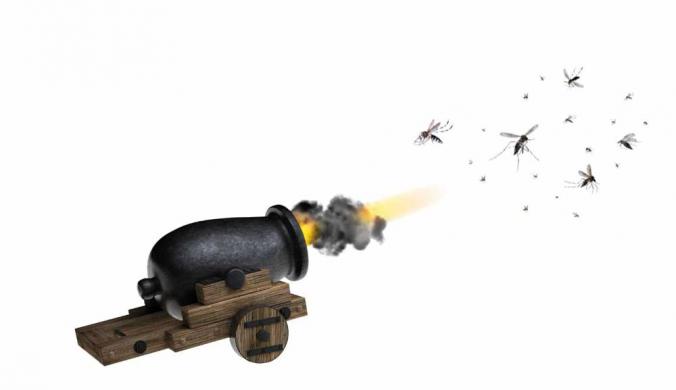How IoT & Big Data are changing Industrial Maintenance Management
Accenture, McKinsey, IBM, GE, and others expect that IoT will generate 14 trillion USDs' worth of economic activity in the next 10 years. As David Mount of Kleiner Perkins says: The Internet of Heavier Things offers tremendous value capture opportunity from data sources that largely exist today.

IoT will have a direct impact on how asset-intensive industries design and manage their assets. As IoT is developing at a rapid state, Plant Managers and Operational Executives are looking for effective ways to transition from Industry 3.0 (PLC, Sensors, Controllers) to Industry 4.0. (IoT, Big Data & Real-Time Asset Analytics)
Plant executives are exploring the developing ecosystem of IoT to influence OPEX, maintenance strategy, and new revenue streams.
The current state:
In order to appreciate the full value of IIoT, it is necessary to outline the current state of managing asset data.
Referencing the Purdue Enterprise Architecture above, almost every plant will have separate software systems to address different layers of the enterprise.
Typically, there are 3 categories:
1. Hardware and Equipment connected to a DCS, which collects data (For Levels 0,1 & 2)
2. An equipment maintenance or CMMS software that holds asset repository and provides a maintenance framework (Part of Level 3)
3. A business-level system – CRM, ERP, SCM, MES system, etc (Level 3, 4 and 5)
Due to the fragmented approach, data generated across different stages of a plant (Engineering Design, Operations, Production, Sales, Bill of Materials, etc) is collected and analysed in silos.
From a maintenance strategy perspective, this means asset maintenance is viewed with isolated or limited data. With the current framework, Asset utilisation cannot be easily correlated with production, demand, and engineering design. Leading to the significant reliance on manual methods to address Predictive, Preventive and Planned Maintenance requirements.
Manual methods introduce varying levels of a factor of safety and amplified tolerances, which influence the accuracy of asset failure/maintenance predictions.
Future – IoT, Big Data & Real-Time Equipment Analytics
Internet of Things (or IoT) will enable industrial products, processes, and services to communicate with each other and with people over the Internet. Providing a framework for asset-intensive industries to digitally connect customer expectations with their operational processes. Opening up value-creating opportunities, technically and commercially.
For example one of the early applications of IoT is John Deere’s FarmSight. It connects equipment, owners, operators, dealers, and agricultural consultants using their existing wireless technology.
Providing John Deere, a connected platform, to proactively understand their customer requirements and align their operations. Using the Farmsight platform John Deere target to drive down costs and overall input, which will enhance their operational efficiency and profitability
IoT brings its own set of new challenges
With the implementation of IIoT, Asset Intensive Industries are not only re-thinking their operational workflows but also their IT Infrastructure. Because when Assets, Processes, Services, and People are connected a substantial amount of data is generated.
Asset intensive industries produce more data in a single day than they did in a full month just a decade ago: equipment data, camera images, Instrumentation data, digital gauge data, bar code data, and much more.
Over the last decade, enterprises have gone from manually monitoring critical assets to automatically monitoring every aspect of their operational processes. The resulting effect is a vast amount of data that cannot be analysed using traditional tools – This challenge is widely known as “Big Data”.
CIO’s of most asset-intensive industries expect Big Data to be a norm and expect it to stay for long. Early adopters of IoT fully comprehend that their competitive advantage lies not in recording data but driving correlations and business value from the collected asset data. Resulting in significant spending by most asset-intensive companies on asset-analytics software or analytics software in general. A trend leveraged by leading asset management software vendors who have prioritised on developing asset-analytics capabilities.
Asset Analytics is changing business models and operational workflows for some of the most complex industries. For example; Rolls-Royce recently announced its TotalCare digital with Microsoft and Singapore Airlines. The capability will be incorporated into Rolls-Royce’s industry-leading TotalCare® services to significantly drive down costs, enhance on-time performance and provide better value to their customers and the industry as a whole.
Qantas Airlines use IoT and Big Data to analyse airframe and engine efficiency on a modular level (Drag, Thrust & Engine efficiencies). They use the data to compare airframes and engines which helps them to meet their network profit target.
Asset data generated by IoT provide real-time telemetry on detailed aspects of production processes. Machine-learning algorithms will spot likely points of asset failure. As a result, Assembly lines will require less manual intervention and supervision from maintenance engineers.
A recent application of IoT related to maintenance and breakdown is Daimler Trucks, they have built sensors and software that detect abnormalities in their trucks and automatically alerts the company’s call centers on maintenance requirements. Daimler says the technology is like driving around with a bunch of virtual technicians.
IoT and Asset Analytics is a platform that plant executives can use to reduce their maintenance costs by up to 30 percent. From a tactical viewpoint, contemporary asset analytics empowers maintenance managers to combine multiple predictive models to predict asset failure with certainty. For example; Vibration Analysis, Infrared Imaging, and Oil/Lubrication Analysis can be combined with machine learning algorithms to analyse assets.
IoT is a mechanism to bring the complete plant online, empowering plant managers to innovate on new product and revenue avenues rather than working on asset data and manual supervision.
The article is written by Prasanna Kulkarni, Founder and Product Architect at Comparesoft.














